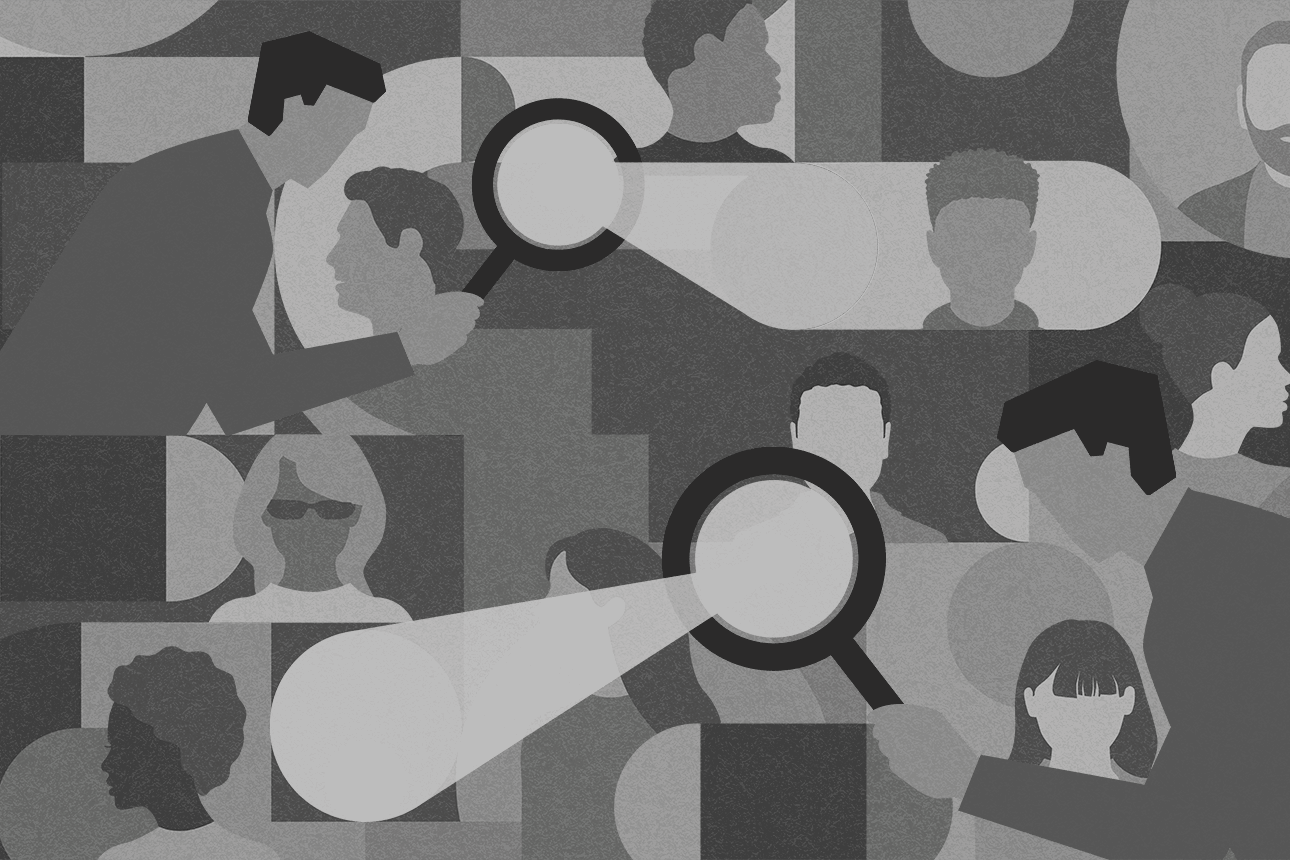Carolyn Geason-Beissel/MIT SMR | Getty Images
Meetings are a staple of organizational life. They’re a place where important decisions are made, strategies discussed, and problems tackled. But too often, meetings don’t deliver the desired outcomes. Teams convene regularly — sometimes out of habit rather than necessity — but while agreements are often reached, the results frequently fall short. Why? Discussions are rushed, assumptions go unchecked, and risks aren’t fully explored. In the drive to achieve consensus, critical questions are left unasked. The result is agreement without the depth of analysis needed for long-term success. This points to the need for a more deliberate approach to structuring meetings.
To explore this idea, we collectively conducted two studies on how engagement and accountability influence decision-making within organizations. In the first study, published in the Journal of Management Studies, 243 employees across 67 organizations were surveyed. In the second study, interviews were conducted with 20 HR professionals from companies involved in the first study to delve deeper into how interpersonal dynamics influence meetings.
Through that research, we identified a simple yet powerful solution: introducing a critical reviewer. The critical reviewer is an individual tasked with challenging prevailing assumptions and ensuring that ideas are evaluated thoroughly. Rather than accepting what’s presented at face value, the critical reviewer encourages the team to consider alternatives, think through risks, and ask whether all relevant factors have been considered.
Our data showed that in teams with a critical reviewer, meeting effectiveness improved by 33% compared with meetings that didn’t include one. Further, decision quality improved by 23%, project delays were reduced by 36%, and participation increased by 28%. Organizations that adopted this role saw a 32% increase in the diversity of ideas discussed, and 29% of employees reported greater satisfaction with meeting outcomes due to more thoughtful discussions. In contrast, meetings without a critical reviewer were more likely to fall into groupthink, leading to rushed conclusions and missed risks, based on self-reported participant data collected over time as teams transitioned from meetings without the role to those with it. As a result, decisions made in those meetings often required follow-up meetings to revisit unresolved issues or make additional adjustments, such as revising project timelines, reallocating resources, or addressing overlooked risks, which delayed progress and reduced team morale.
Get Updates on Transformative Leadership
Evidence-based resources that can help you lead your team more effectively, delivered to your inbox monthly.
Please enter a valid email address
Thank you for signing up
Benefits of Introducing a Critical Reviewer
Introducing a critical reviewer changes the entire dynamic of a meeting: Teams become more deliberate, and discussions go deeper. The critical reviewer’s primary responsibility is to challenge assumptions, ask probing questions, and ensure that every angle is explored before a decision is made. This role not only fosters better outcomes but also creates an environment in which people feel encouraged to think critically and contribute meaningfully.
One factor that makes the critical reviewer role particularly effective is that the role rotates among participants, which helps create a culture of shared accountability. It ensures that no single person has to continuously question others, which could otherwise lead to tension or fatigue. Instead, the responsibility is distributed, helping everyone develop sharper critical thinking skills.
Introducing a critical reviewer changes the entire dynamic of a meeting: Teams become more deliberate, and discussions go deeper.
We found that rotating the role also improved meeting engagement. Teams with a rotating critical reviewer were compared to those without the role and those with a single consistent reviewer, highlighting the added benefits of rotation. By giving each team member the opportunity to serve as the critical reviewer, participation naturally increased. Team members became more invested, knowing that they would soon take on this role themselves. Teams with rotating critical reviewers reported a 28% improvement in engagement, a 19% reduction in meeting-related conflicts, and a 25% increase in team morale. Productivity rose by 17%, reflecting the motivational boost of shared responsibility. Structured questioning from the critical reviewer kept discussions focused and on track, reducing decision-making time by 21%. Teams that used this approach experienced a 24% improvement in decision clarity and a 22% reduction in follow-up meetings.
Some of the HR professionals we interviewed noted that implementing the critical reviewer role didn’t just improve decision quality and team dynamics — it also helped prevent costly rework. In organizations that adopted this approach, post-decision revisions dropped by 19% because decisions were more thoroughly considered upfront. Teams moved forward with greater confidence knowing that risks had been evaluated and alternative solutions explored. As a result, project completion rates within deadlines improved by 31%.
Perhaps most importantly, meetings with a critical reviewer had more focused, action-oriented outcomes. Employees reported a 40% increase in the perceived effectiveness of their meetings, with discussions that felt more purposeful and directed. By ensuring that assumptions were challenged and risks identified early, the critical reviewer helped drive well-considered decisions that were also executed more efficiently.
How to Implement a Critical Reviewer Role
Any organization can implement the critical reviewer role and, more importantly, anyone — regardless of position or experience — can step into it and make an impact. Here’s how.
1. Ask ‘What If?’ and ‘How?’ Questions
One of the most straightforward ways to act as an effective critical reviewer is to ask “What if?” and “How?” questions. These questions encourage the team to think beyond the immediate issue and prompt people to explore alternative scenarios, consider potential risks, and assess the feasibility of their plans. Critical reviewers who use these types of questions help ensure that the team doesn’t rush into decisions without examining different possibilities.
For instance, in one of the organizations we studied, a critical reviewer asked, “What if our supplier increases costs by 10% — how would that affect our margins?” This simple question led the team members to reevaluate their budget forecasts and identify a vulnerability that hadn’t been considered in the initial planning. By forcing teams to confront potential risks early on, what-if questions ensure that decisions are not based solely on best-case scenarios.
Similarly, “How?” questions challenge a team to think through practical implications. Questions like “How will we manage if key team members are unavailable due to unforeseen circumstances?” or “How does this decision affect other ongoing projects?” encourage operational thinking and help the team prepare for real-world challenges that may arise during a decision’s implementation. By anticipating challenges and reducing uncertainty, critical reviewers help guide teams toward more resilient, well-thought-out decisions.
2. Probe for Evidence and Data
Ideas presented with confidence often sound compelling in meetings. However, confidence alone doesn’t make an idea viable. Critical reviewers must probe for evidence and data supporting the decisions being made. This step ensures that decisions are grounded in facts rather than assumptions or anecdotal impressions.
For example, in several organizations we studied, critical reviewers asked questions like “What data supports this projection?” and “How confident are we in these assumptions, based on past experiences?” These questions compel team members to substantiate their ideas with solid evidence, ensuring that decisions aren’t swayed by overconfidence or intuition alone.
Confidence alone doesn’t make an idea viable. Critical reviewers must probe for evidence and data supporting the decisions being made.
A critical reviewer who probes for evidence isn’t simply asking for more data; they’re ensuring that decisions are based on relevant, timely, and accurate information. By asking, “Where did this data come from?” or “How current is this information?” they make sure that the foundation of a decision is reliable. In one case we reviewed, this approach helped a team realize that their data on customer preferences was outdated. This insight prompted a last-minute adjustment to their marketing strategy, which proved crucial for success. Probing for data not only improves decision quality but also encourages the team to approach their analysis with greater rigor, preventing decisions based on incomplete or biased information.
3. Challenge Assumptions
Every decision made in a meeting is built on a series of assumptions — about the market, customers, resources, or internal capabilities. One of the most important responsibilities of a critical reviewer is to challenge assumptions to determine whether they can withstand scrutiny and to uncover blind spots that might otherwise go unnoticed.
For example, asking, “What assumptions are we making about the market over the next six months?” or “Are we assuming that our customers will behave the same way they did last year?” prompts the team to consider whether they are making decisions based on reality or outdated, untested assumptions.
In one case we studied, a critical reviewer questioned the assumption that a product’s target market would remain stable. This led the team to revisit their market research and uncover significant shifts in customer preferences. As a result, the company avoided launching a product into a market that was moving in a different direction. By challenging assumptions, critical reviewers can help to ensure that decisions are grounded in current, accurate data, reducing the risk of costly mistakes later on.
4. Suggest Alternatives
Being a critical reviewer isn’t just about identifying problems — it’s also about helping the team explore alternative solutions. When a team identifies a potential weakness or gap in the proposed plan, the team should suggest alternative paths that might mitigate risks or open up new opportunities. This keeps the conversation constructive and ensures that the team doesn’t become too focused on a single solution without considering other viable options.
For instance, instead of simply pointing out that a budget is tight, a critical reviewer might ask, “Have we thought about using a different supplier to reduce costs?” or “Could we run a pilot program to test this initiative on a smaller scale before fully committing?” Offering alternatives encourages creative problem-solving and prevents the team from feeling backed into a corner.
In the organizations we studied, critical reviewers who regularly suggested alternatives saw a 25% improvement in project success rates because their teams were better able to pivot when unexpected obstacles arose. This proactive approach led to more flexible planning and stronger decision-making processes overall. Offering alternatives allows the team to stay agile, open to new possibilities, and better prepared to navigate uncertainties.
5. Focus on Trade-Offs and Priorities
Every decision involves trade-offs. Whether it’s a matter of budget, time, or resources, pursuing one course of action often means sacrificing another. A critical reviewer can help the team focus on these trade-offs by encouraging them to weigh the costs and benefits of each decision.
For example, they might ask, “What are we giving up to pursue this strategy?” or “How does this decision affect other priorities we’ve already committed to?” These questions force the team to consider the broader implications of their choices, ensuring that the decision aligns with both short-term needs and long-term goals.
In one of the companies we studied, a critical reviewer raised the question, “If we allocate more resources to this project, will it delay the launch of another key initiative?” This simple query prompted the team to reassess its priorities and make a more balanced decision, preventing an overextension of resources and ensuring more sustainable progress across multiple projects. Focusing on trade-offs helps a team make balanced, realistic decisions that account for all available resources and align with the organization’s broader strategic goals.
Introducing the critical reviewer role is a simple yet effective way to improve the quality of meetings and decision-making. By ensuring that meetings include a designated attendee who will encourage deeper discussions, question assumptions, and explore alternatives, organizations can achieve better outcomes. The critical reviewer role fosters accountability, innovation, and, ultimately, more resilient teams poised for long-term success.
Reprint #:
“The MIT Sloan Management Review is a research-based magazine and digital platform for business executives published at the MIT Sloan School of Management.”
Please visit the firm link to site






